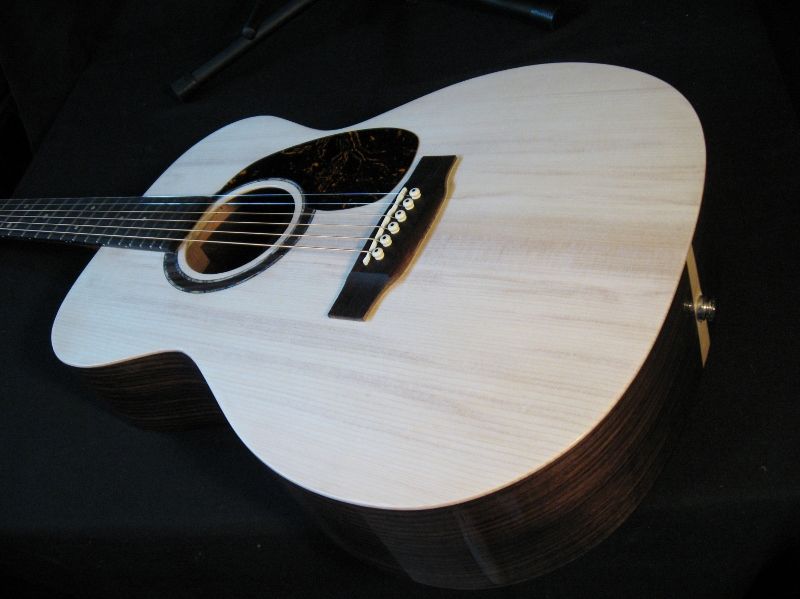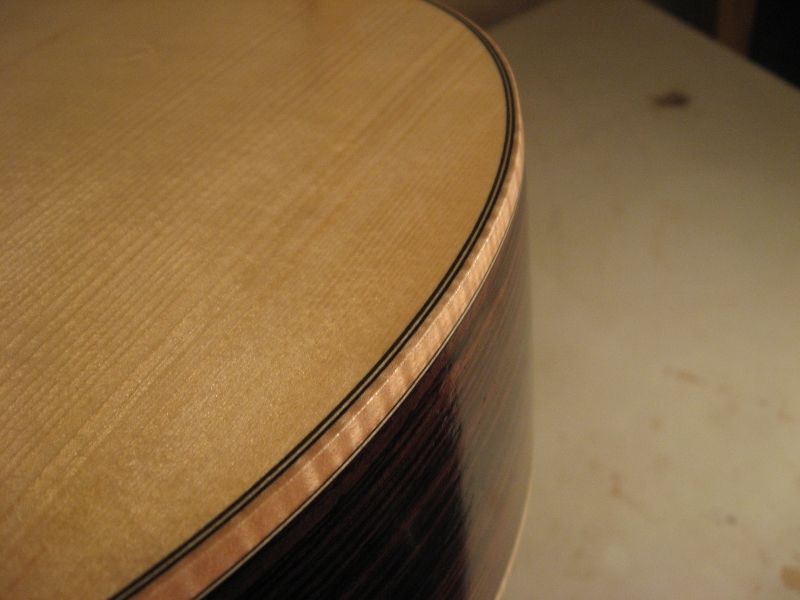
 |
|
#16
|
|||
|
|||
|
Quote:
 I'm with you on the fact that the pinned neck has gone out of style. I guess you may have a few people set in their ways or trying to replicate the exact instruments of days gone by that still use this method. Other than those two reasons I can't see why anyone would want to go to the trouble of it. Unless they just like a challenge 
|
|
#17
|
|||
|
|||
|
I didn't over simplify anything. The concept was complimentary angles equaling 180*. Doesn't matter if it's 91* + 89* = 180* or 91.3* + 88.7* = 180*. If he measures the angle formed by the top of the neck and heel cheek and subtracts 180 he'll get the complimentary angle he needs on the top to get a good neck set. OP said "setting the neck is really complicated to me." Seems to me he was looking for a simple answer. I gave him one. And I would venture to say most builder use the same concept.
__________________
Tim B |
|
#18
|
|||
|
|||
|
Quote:
Quote:
You are providing a formula, rather than the goal underlying the formula. The formula works within a relatively small range - it isn't just ANY complementary angles. Let me illustrate the point via exaggeration. Suppose you choose 45 degrees for the heel cheek. The complement is 135, by definition forming 180 degrees. The fingerboard will lie nice and flat along the top of the neck and continue without discontinuity along the surface of the top. What will be the string height above the top at the bridge/saddle resulting from this set of complementary angles? Think archtop guitars. What the complementary angles formula does is ensure that there is no discontinuity between the plane of the neck and the plane of the top in the region of the top to which the fingerboard is glued. The angles used are what is necessary to produce a desired string height. Using 91/89 will give a different string height than, say, 90/90 or 89/91. You can use the tail to wag the dog, but only within a narrow band of values. It works practically, but in using it, ideally, one shouldn't loose sight of what one is trying to achieve - a desired string height at the bridge. Achieving 88.7 degrees is another issue (and discussion) all together. Quote:
Last edited by charles Tauber; 12-08-2012 at 12:45 AM. |
|
#19
|
|||
|
|||
|
Quote:
So far as the neck angle is concerned, it doesn't matter how thick your bridge is. When all is said and done, you are going to want the top of the frets and the top of the bridge in the same plane. What establishes the neck angle is the contact point between the heel of the neck and the sides of the guitar. The heel of the neck is how you control the neck angle. So, if the neck angle is shallow (high action with a low saddle) you will have to remove a wedged-shape piece of the heel. The thick end of the wedge would be removed at the heel-cap. If the up and down angle is the "pitch" then the side to side angle would be the "yaw". The yaw has to be adjusted too or else one of the e-strings will be too close to the edge of the fretboard. You adjust the yaw by removing more material from one side of the heel (or "tenon shoulder") than the other. The tools I use for cutting the heel are chisels and a paint stirring stick with self-adhesive sandpaper attached to it. Check out my routine in photos 8-11 here: http://fingerlakesguitarrepair.com/m...il-neck-reset/ |
|
#20
|
|||
|
|||
|
I love the "neck-set go-bars". Very clever.
If you change the angle of the neck, how do you deal with the portion of the fingerboard that glues to the top. If the neck is tilted backward to raise the string height at the bridge, and then the fingerboard glued to the top, the plane of the neck and the plane of the top aren't the same. Does the fingerboard just bend at the neck joint (i.e. 14th fret) as the transition from the plane of the neck to the plane of the top? |
|
#21
|
|||
|
|||
|
Quote:
If there's a cutaway and the customer doesn't mind paying for additional labor, I'll make a little wedge to boost up the end of the fb. But the wedge probably won't be invisible and most guys don't notice or care or want to pay more so I don't do it very often. |
|
#22
|
|||
|
|||
|
Quote:
While Nate doesn't say it (and I'm sure he knows this) when he resets that neck he is matching up the required angle to get the plane back to 180. That's why a wedge is most often needed under he fretboard. By shaving the heel the neck angle has changed but the body angle hasn't. Adding a wedge changes the body angle and gets the two surfaces back to a complimentary 180. And that is especially true in his example of a Martin guitar.
__________________
Tim B |
|
#23
|
|||
|
|||
|
Quote:
If one uses a spherical dish to have the radius you mention, how does one glue a flat plane (underside of a fingerboard) to a spherical surface and not have gaps? Quote:
|
|
#24
|
|||
|
|||
|
Quote:
__________________
Tim B |
|
#25
|
|||
|
|||
|
The whole point of a radiused sanding dish is to give as perfect a glue joint as possible.
If you sand the rim and kerfed lining dead flat, (as opposed to sanding a spherical contour with a radiused sanding dish) then , if your top is radiused, you will have a very dodgy glue joint in the waist area. |
|
#26
|
|||
|
|||
|
Quote:
Edit: not sure if you can see the detail here. 
__________________
Tim B Last edited by Ben-Had; 12-08-2012 at 01:57 PM. |
|
#27
|
|||
|
|||
|
OK, I see where you are coming from ...Bill Cumpiano adopted a similar approach in his seminal work on guitarmaking IIRC.
Just out of interest, if you did install binding, would you be totally certain that the glue joint between the kerfed lining and the top would be strong enough to handle the rebates for purfling/binding ? |
|
#28
|
|||
|
|||
|
Quote:
Edit: this is the sister guitar to the one above. It's in the spray booth now. Maple binding and B/W/B purfling. 
__________________
Tim B Last edited by Ben-Had; 12-08-2012 at 07:12 PM. |
|
#29
|
|||
|
|||
|
[QUOTE=charles Tauber;3270447]
If one uses a spherical dish to have the radius you mention, how does one glue a flat plane (underside of a fingerboard) to a spherical surface and not have gaps? QUOTE] Radius the - (underside of a fingerboard) -, fingerboard extension, to match the - spherical surface -, of the top. Chalk, sharp chisel, little scraper, etc. Same way we do the tone bars on a mandolin. The last time I checked, it was still legal to do that. Don't know if anything has changed since then. Then you don't have to do all that grinding on the top. Glen |
|
#30
|
|||
|
|||
|
Quote:

|